Forums
- Forums
- Duggy's Reference Hangar
- IJAAF Library
- Mitsubishi Ki-15
Mitsubishi Ki-15
Post a reply
- Go to Previous topic
- Go to Next topic
- Go to Welcome
- Go to Introduce Yourself
- Go to General Discussion
- Go to Screenshots, Images and Videos
- Go to Off topic
- Go to Works in Progress
- Go to Skinning Tips / Tutorials
- Go to Skin Requests
- Go to IJAAF Library
- Go to Luftwaffe Library
- Go to RAF Library
- Go to USAAF / USN Library
- Go to Misc Library
- Go to The Ops Room
- Go to Made in Germany
- Go to Campaigns and Missions
- Go to Works in Progress
- Go to Juri's Air-Raid Shelter
- Go to Campaigns and Missions
- Go to Works in Progress
- Go to Skinpacks
- Go to External Projects Discussion
- Go to Books & Resources
-
13 years agoSun Oct 24 2021, 11:48amDuggy
 Main AdminIn July 1935 the Imperial Japanese Army drew up its specification for a new two-seat reconnaissance aircraft, and Mitsubishi responded with a cantilever low-wing monoplane, the Mitsubishi Ki-15. Service testing was completed without difficulty and the type was ordered into production under the official designation Army Type 97 Command Reconnaissance Plane Model 1. In May 1937, a year after the first flight, delivery of production aircraft to the army began.
Main AdminIn July 1935 the Imperial Japanese Army drew up its specification for a new two-seat reconnaissance aircraft, and Mitsubishi responded with a cantilever low-wing monoplane, the Mitsubishi Ki-15. Service testing was completed without difficulty and the type was ordered into production under the official designation Army Type 97 Command Reconnaissance Plane Model 1. In May 1937, a year after the first flight, delivery of production aircraft to the army began.
Just before that, however, military observers in the west should have gained some premonition of Japan's growing capability in aircraft design when the second (civil) prototype was used to establish a new record flight time between Japan and England. The army's Ki-15-I had been received in time to make a significant impact at the beginning of the war with China, the type's high speed giving it freedom of the skies until China introduced the Soviet Polikarpov I-16. However, plans had already been made to upgrade performance of the Ki-15-I, this being achieved by installing the 671kW, smaller-diameter Mitsubishi Ha-26-I engine, its incorporation providing an opportunity to overcome what had been the major shortcoming of the type, a poor forward field of view past the large-diameter Nakajima engine. The improved version entered production for the army in September 1939 as the Ki- 15-II, but before that the Japanese navy, impressed by the performance of this aircraft, ordered 20 examples of the Ki-15-II under the official designation Navy Type 98 Reconnaissance Plane Model 1, Mitsubishi designation C5M1. The navy acquired subsequently 30 C5M2 aircraft that were generally similar except for installation of the more powerful 708kW Nakajima Sakae (prosperity) 12 engine. When production ended almost 500 of all versions had been built, the majority being in first-line service when the Pacific war started. Given the Allied codename 'Babs', the type was relegated to second-line roles in early 1943, but many survived to be used in kamikaze attacks at the war's end.
General characteristics
* Crew: 2
* Length: 8.7 m (28 ft 6?.5 in)
* Wingspan: 12.0 m (39 ft 4?.5 in)
* Height: 3.35 m (11 ft 0 in)
* Wing area: 20.36 m? (219.16 ft?)
* Empty weight: 1,400 kg (3,086 lb)
* Loaded weight: 2,033 kg[7] (4,482 lb)
* Max takeoff weight: 2,300 kg (5,071 lb)
* Powerplant: 1? Nakajima Ha-8 9-cylinder radial piston, 477 kW (640 hp)
Performance
* Maximum speed: 480 km/h (259 kn, 298 mph) at 4,000 m (13,125 ft)
* Cruise speed: 320 km/h (173 kn, 199 mph) at 5,000 m (16,404 ft)
* Range: 2,400 km (1,297 nmi, 1,491 mi)
* Service ceiling: 11,400 m (37,400 ft)
* Climb to 5,000 m (16,404 ft): 8 minutes 27 sec
Armament
* 1x 7.7 mm (0.303 in) machine gun
* 250 kg (551 lb) of bombs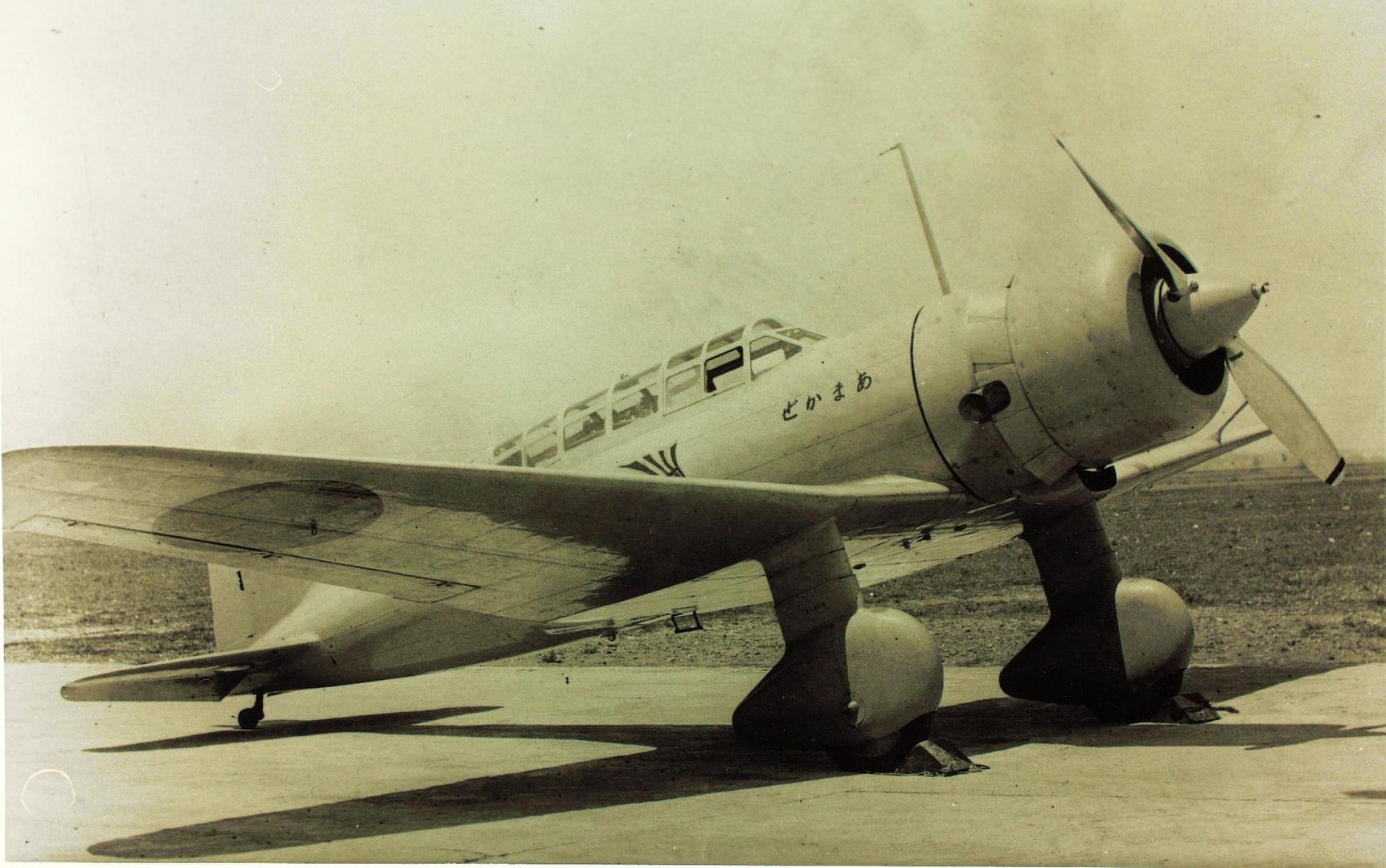
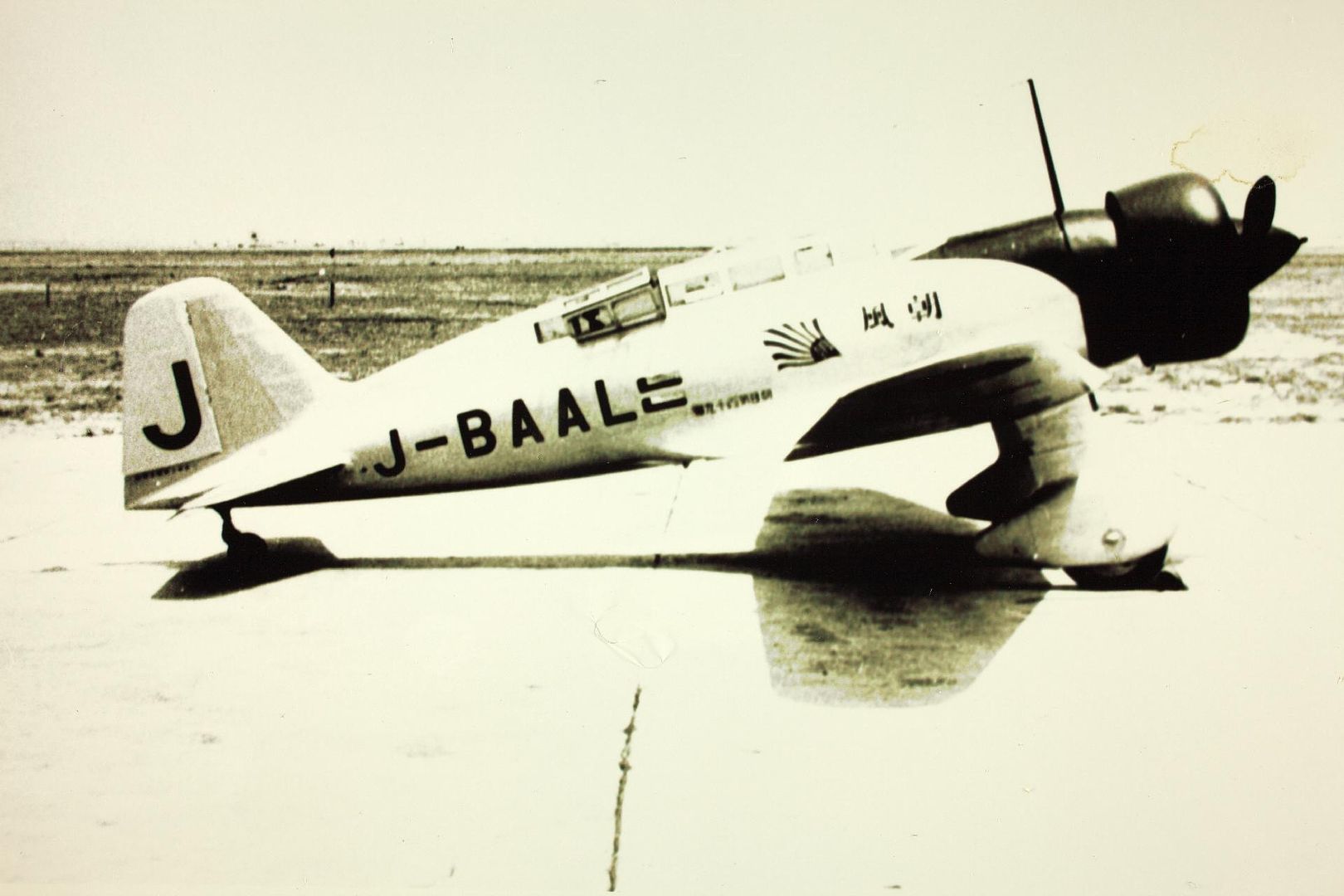
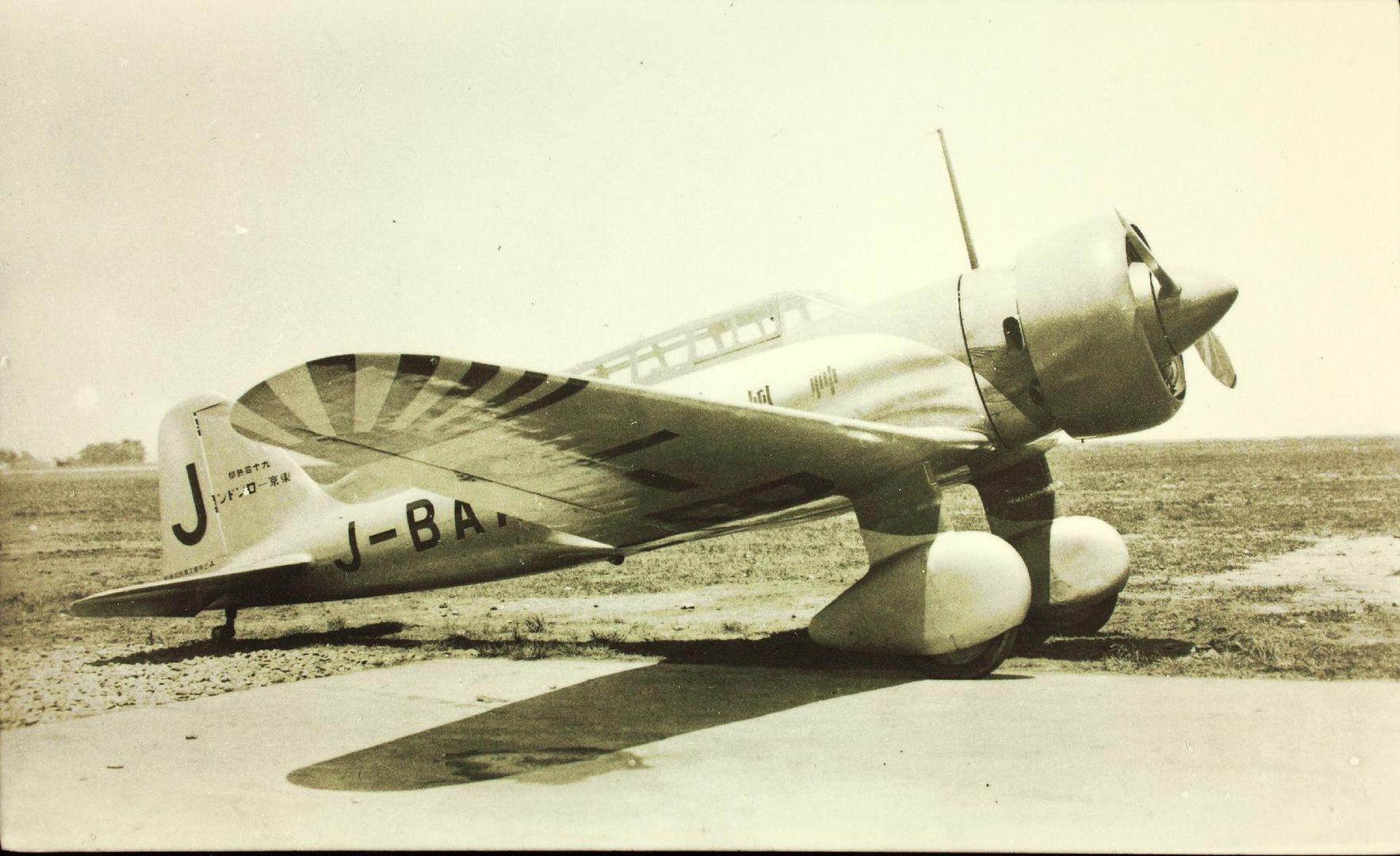
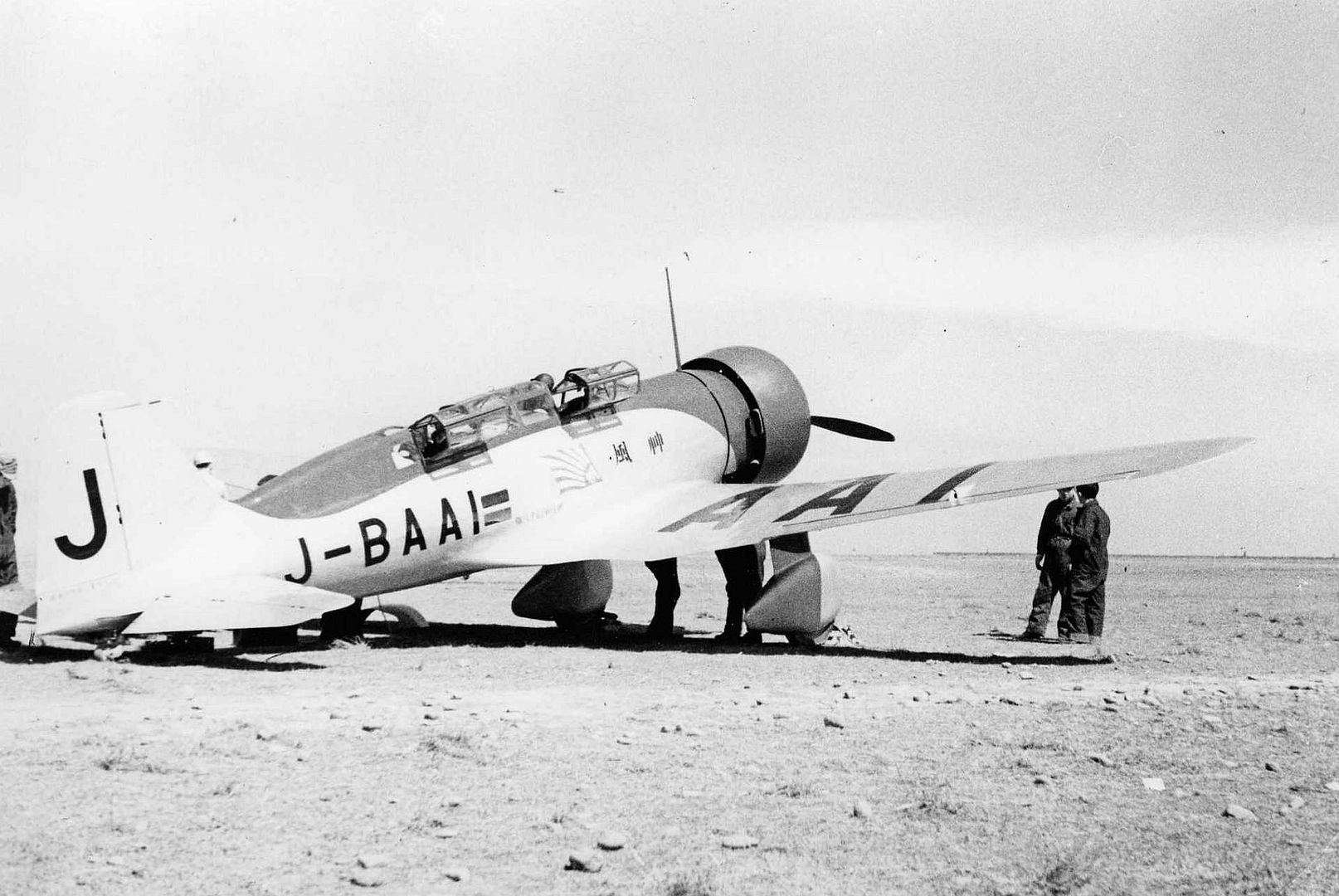

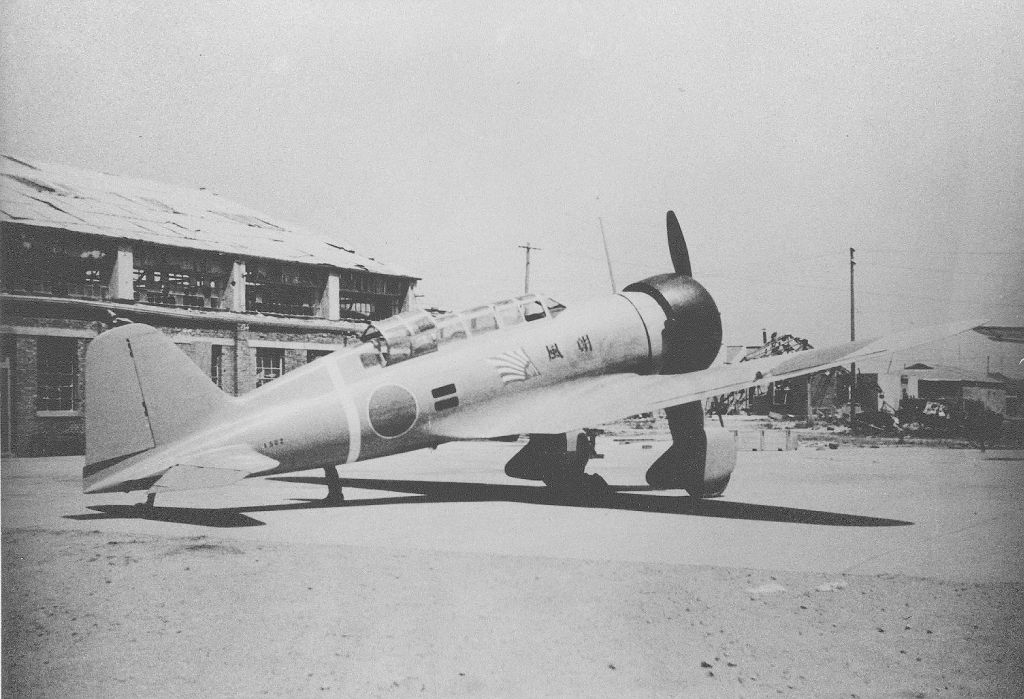
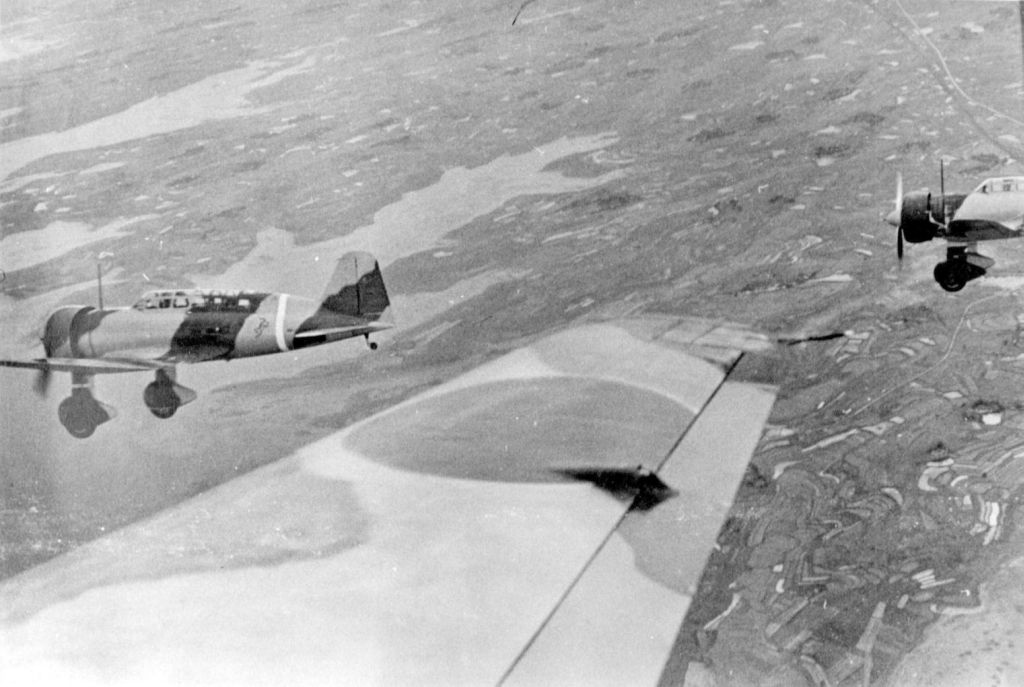
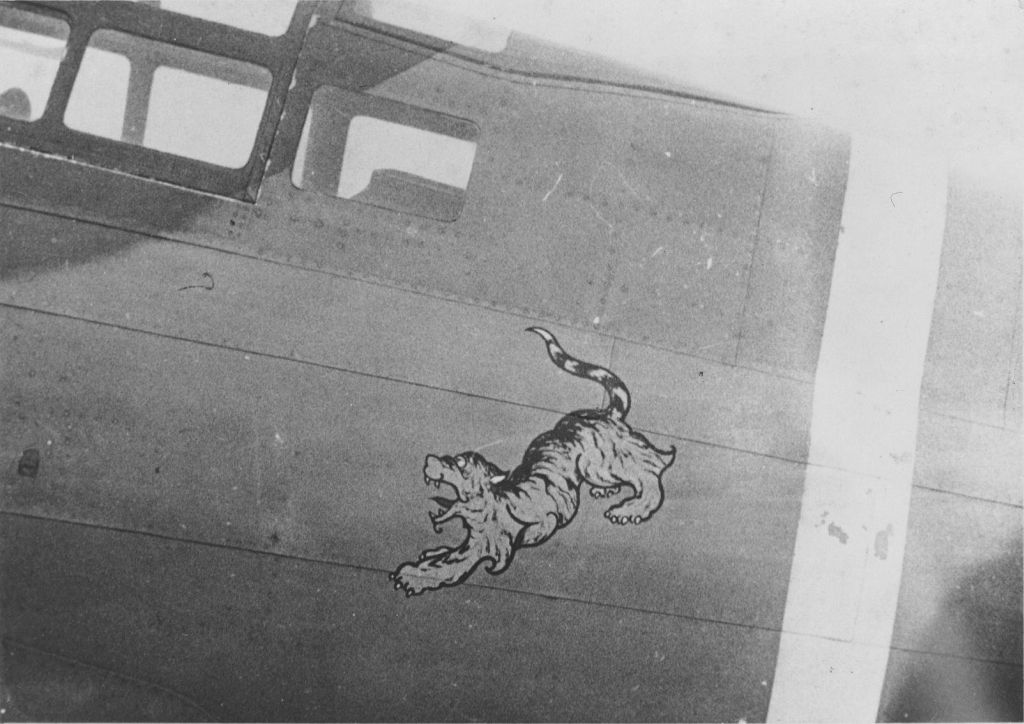
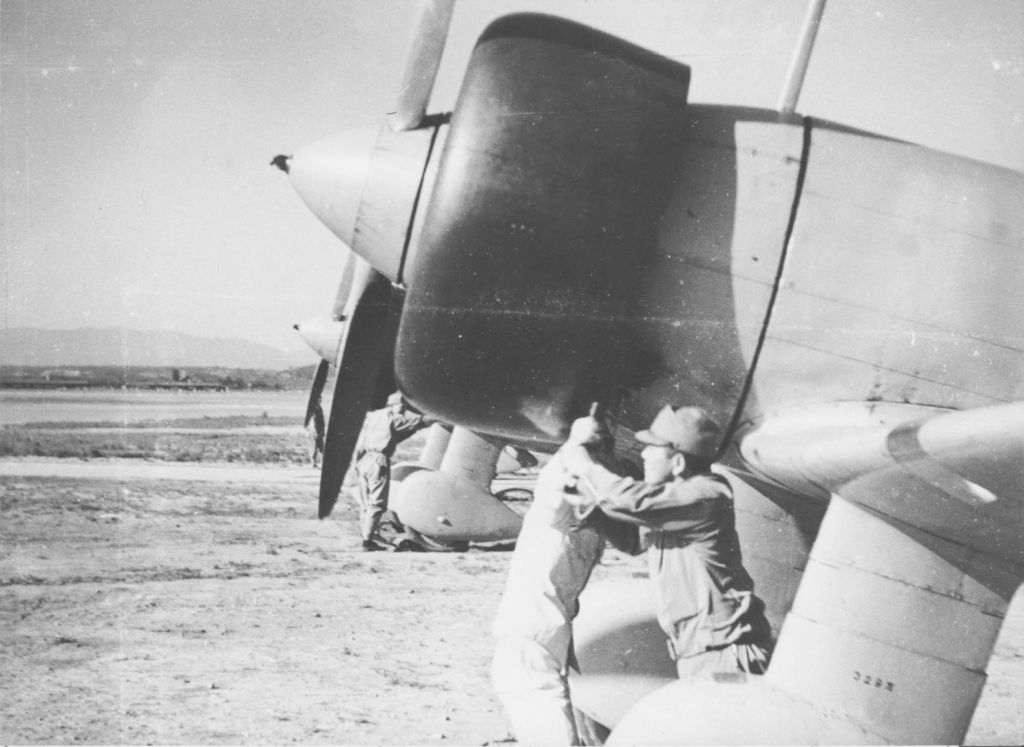
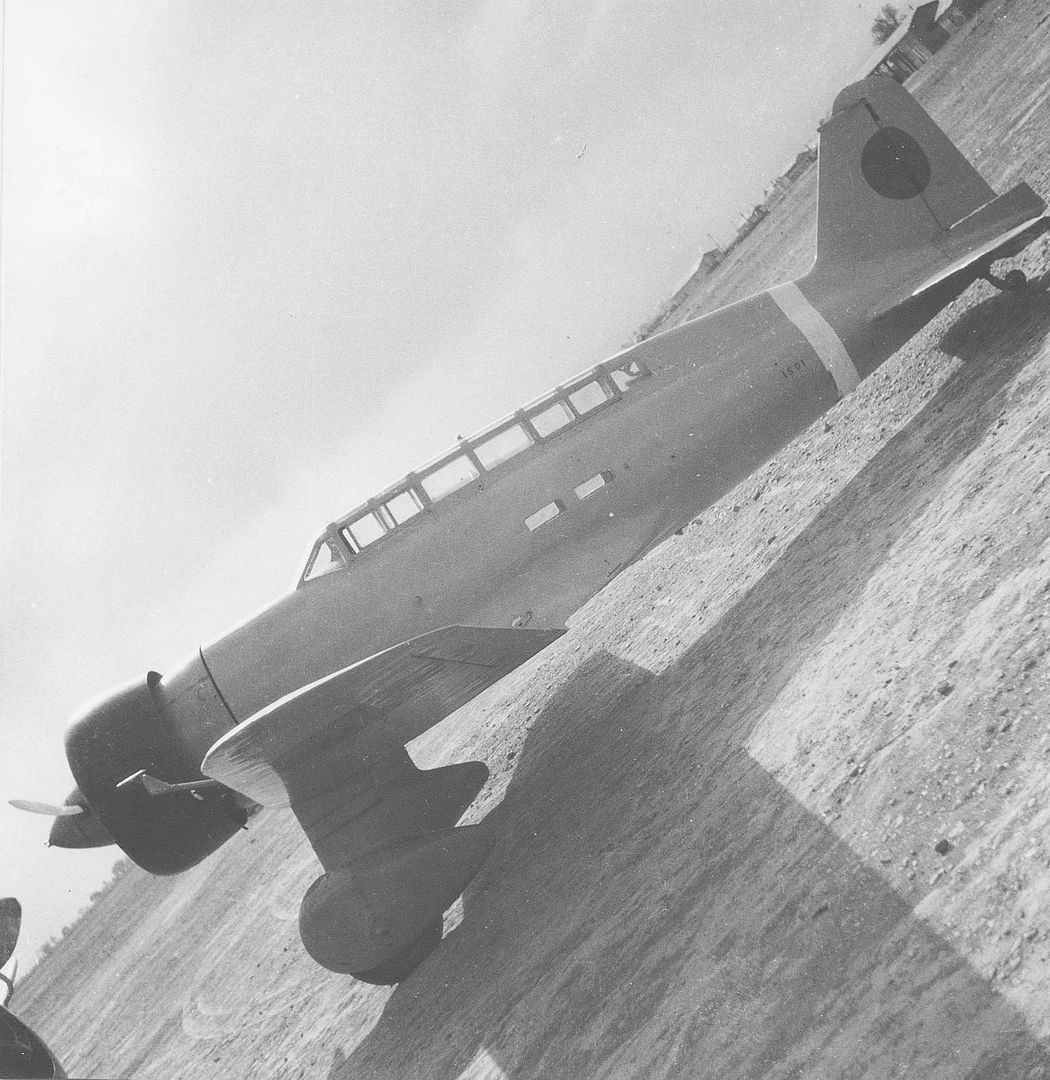
Kamikaze (1937 aircraft)
The Kamikaze (???, Kamikaze-go?) was a Mitsubishi Ki-15 Karigane aircraft, (registration J-BAAI) sponsored by the newspaper Asahi Shimbun. It became famous on April 9, 1937 as the first Japanese-built aircraft to fly from Japan to Europe. The flight from Tokyo to London took 51 hours, 17 minutes and 23 seconds and was piloted by Masaaki Iinuma (1912?1941), with Kenji Tsukagoshi (1900?1943) serving as navigator.
Background
In the 1930s, as the performance of aircraft was rapidly improving, air races and the setting of long distance flight records was very popular in Europe and North America, and were often used as publicity stunts by newspapers. A French newspaper offered a substantial monetary prize for the first aircraft to fly between Paris and Tokyo within 100 hours. Many aviators had failed in the attempt, including one French aviator who died when his plane crashed into the mountains of Ky?sh? on the last leg of his record attempt from Paris to Tokyo.
Also in the 1930s, Japanese aircraft designers had made maximizing the range of their aircraft a high priority, in order to link the Japanese home islands with the Empire of Japan's overseas possessions in Taiwan, Korea, Manchuria and the South Pacific Mandate. Long range capabilities also had implications for the with development of military aircraft for future conflicts in China and over the Pacific Ocean - potential war theatres which offered few airfields for aircraft to refuel.
The European record flight of the Kamikaze-go was sponsored by the Asahi Shimbun newspaper to celebrate the coronation of Great Britain's King George VI, and also as a goodwill flight to European countries.
The record flight
The Kamikaze-go took off from Tachikawa Airfield in Tokyo at 2:12:04 PM on April 6, 1937, with much fanfare. The aircraft flew from Tokyo via Taipei to Hanoi and Vientiane in French Indochina, then via Calcutta and Karachi in British India and Basra and Baghdad in Iraq, and then Athens, Rome and Paris in Europe.
The aircraft landed at London's Croydon airport to a cheering crowd of spectators at 3:30 PM on April 9. The total elapsed time since departure was 94 hours, 17 minutes and 56 seconds, with actual flight time for the whole distance of 15,357 km of was 51 hours, 19 minutes and 23 seconds (average speed: 162,8 km/h or 101 miles/h). The flight was the first F?d?ration A?ronautique Internationale aviation record to have been won by the Japanese.
This flight to Europe made the pilot, Masaaki Iinuma (then 26 years old), a national hero, and he was acclaimed as the ?Japanese Lindbergh?. Both pilots were awarded the L?gion d'honneur by the French government.
On April 12, only a few days after the record-breaking flight, the Kamikaze-go carried Prince Chichibu and Princess Chichibu, who were visiting England for the coronation, on a joy ride. A month later, on May 12, it was used to film the coronation ceremonies from the air. The Kamikaze-go was then flown back to Japan, duplicating its original route in the opposite direction, departing London May 14 and arriving in Osaka on May 20, and Haneda airport in Tokyo on May 21.
Kamikaze 's pilot, Masaaki Iinuma, later served as chief test pilot for the Kayaba Ka-1 autogyro from May 1941. He was later killed in action in the Pacific War in December 1941 near Phnom Penh, Cambodia. He was 29 years old. In 1943, Kamikaze 's former navigator, Tsukagoshi, set off from Singapore for Germany in the prototype Tachikawa Ki-77, but disappeared over the Indian Ocean.
After its return to Japan, the Kamikaze-go continued to work actively in a variety of capacities for the Asahi Shimbun. However, on a flight back from the south of China it encountered bad weather and had to be ditched in southern Taiwan. It was later recovered and put on display at a "Kamikaze Memorial Center" on Ikoma, Nara Prefecture. The facilities were destroyed in World War II.
To commemorate the 1937 flight of the aircraft, Asahi Shimbun produced sake bottles cups which were made available with the image of this aircraft on it.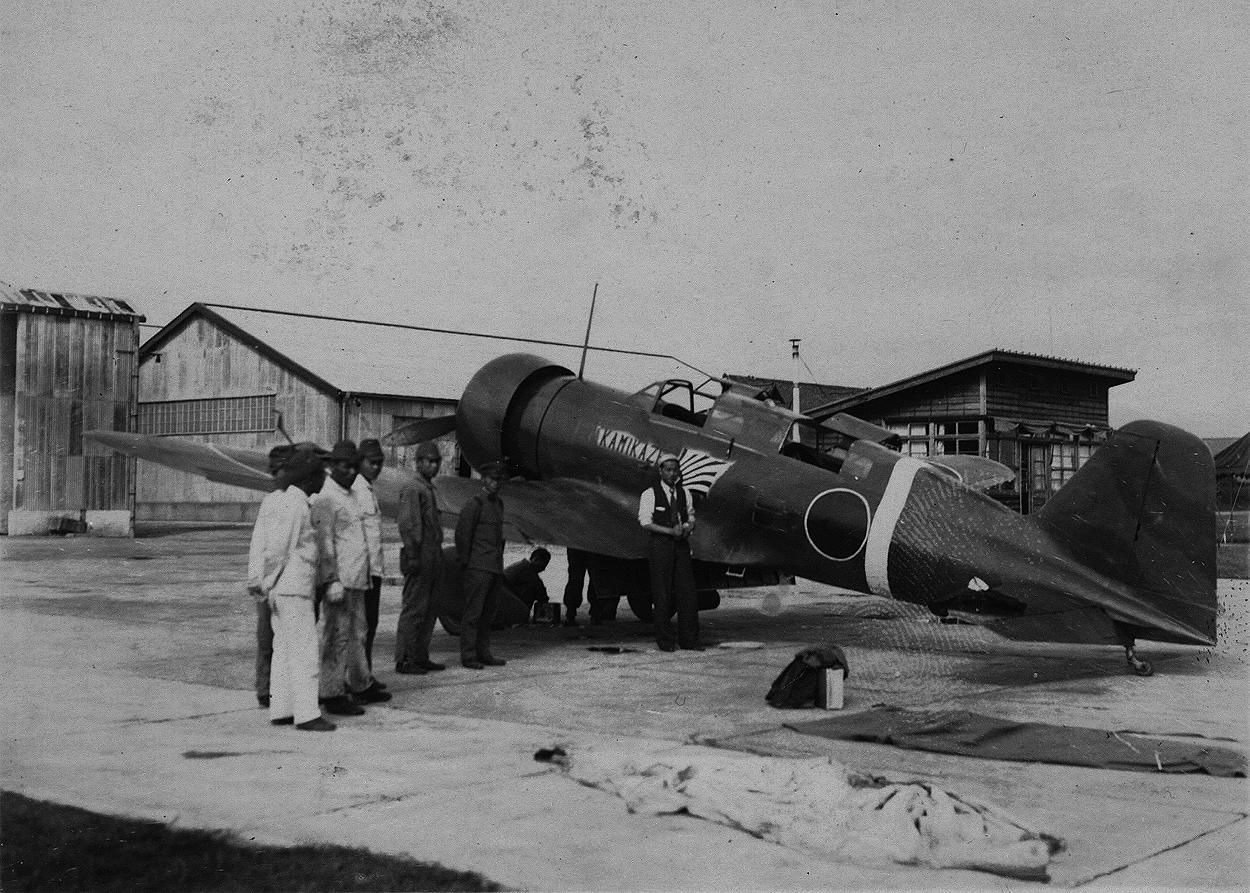
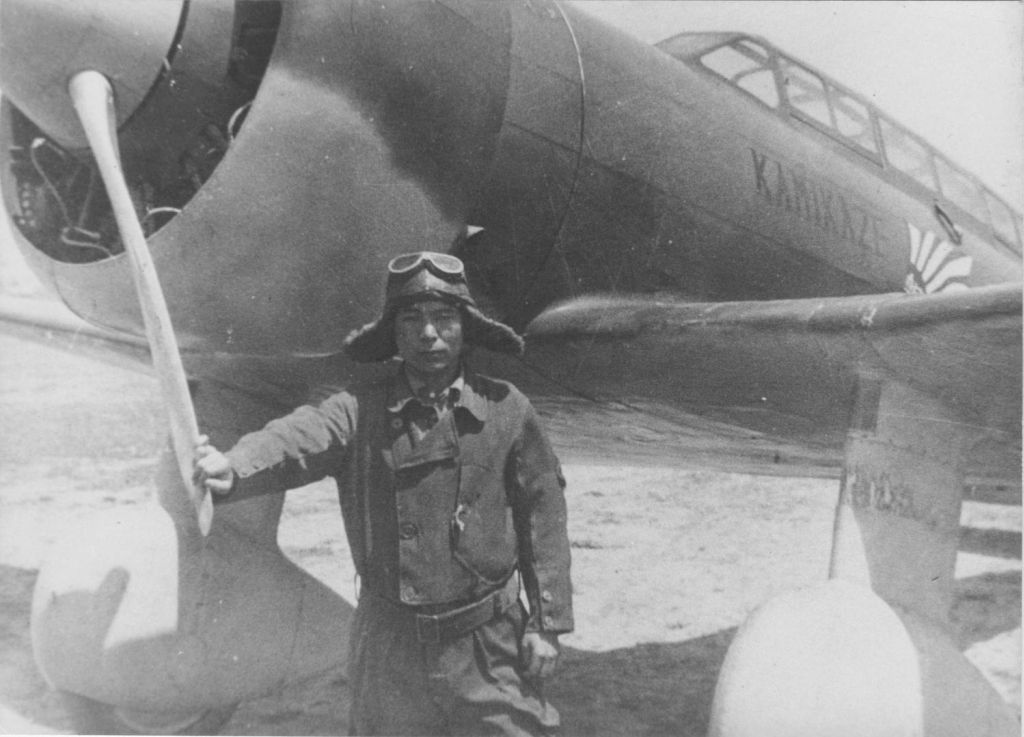
Regards Duggy.
Post a reply
- Go to Previous topic
- Go to Next topic
- Go to Welcome
- Go to Introduce Yourself
- Go to General Discussion
- Go to Screenshots, Images and Videos
- Go to Off topic
- Go to Works in Progress
- Go to Skinning Tips / Tutorials
- Go to Skin Requests
- Go to IJAAF Library
- Go to Luftwaffe Library
- Go to RAF Library
- Go to USAAF / USN Library
- Go to Misc Library
- Go to The Ops Room
- Go to Made in Germany
- Go to Campaigns and Missions
- Go to Works in Progress
- Go to Juri's Air-Raid Shelter
- Go to Campaigns and Missions
- Go to Works in Progress
- Go to Skinpacks
- Go to External Projects Discussion
- Go to Books & Resources
